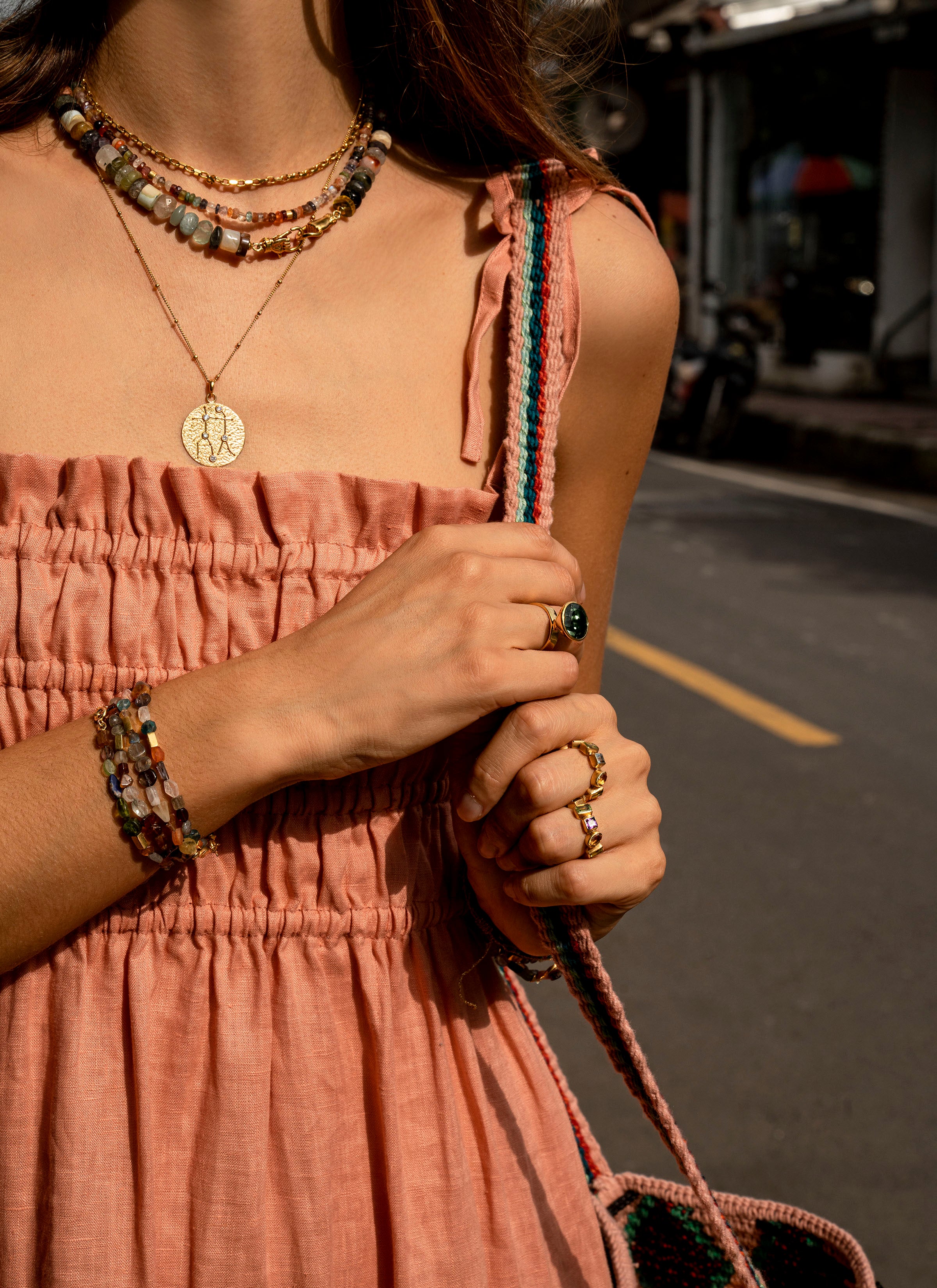jewelry
Gold plated jewelry requires special care to ensure its longevity and maintain its appearance. Here are some general tips for caring for sterling silver and gold plated jewelry:

Jewelry Cleaning
Tools:
- Toothbrush
- Toothpaste
- Dishwashing liquid
- Cotton Bud
- Soft cloth
Instructions:
- Prepare lukewarm water in a bowl.
- Add a small amount of dishwashing liquid.
- Place your jewelry in the water and let it sit for a few minutes.
- Gently brush your jewelry with a small amount of toothpaste.
- Rinse thoroughly and use a soft cloth to dry it completely.
- Polish all edges with a cotton bud.
clothing

Silkwear
Silk items are delicate. Beyond practicing care when washing and drying, a proper maintenance is required when dealing with imperfections, like wrinkles, and when storing the pieces. Here are some general tips for caring for silk:
Wrinkle Removal
Use a steamer on dry garments, make sure the temperature doesn't get too hot. If the steamer drips and leaves a water stain, dunk the item in cool water and allow it to dry. The spot should disappear.
Storage
For everyday storage, hang silk items in your closet on fuzzy hangers to prevent them from slipping. Use a wide bar to hang pants across the legs or a clip hanger on the bottom hem. For longer-term storage, remember that moths love to feast on natural fibers like silk and wool—so always clean silk clothes before putting them away for the season and use anti-moth paper or lavender sachets.

Knitwear
Caring knitwear can be tricky as the shape can change without a proper care. here are some general tips for caring for knitwear:
Dry towel
Never wring or hang-dry knitwear, as wool stretches easily, especially when wet. Instead, roll the garment in a clean and dry towel before gently pressing it. Once the towel has absorbed the excess water, carefully ease your knit into shape and lay it flat on top of a dry towel or a drying rack.
Storage
Since wool stretches easily, it’s best to store your knits neatly folded in a drawer or shelf, leaving some room between them as tightly packed garments make for an inviting environment for moths. Placing dried cedar or lavender in your closet can also help protect your knits from moths.
Avoid friction
avoid bags and belts that rub against the knit fabric. While wool will soften with each wear, it might also start to show ‘pilling’ – small pieces of fluff that occur particularly in areas that are subject to friction during wear. you can remove pilling by gently plucking it off by hand. Avoid de-pilling devices such as ‘wool-razors’, as they can damage the fabric.
Thread loose treatment
If there’s a thread loose, you can easily pull the yarn to the back of the garment using a crochet hook before securing it in a knot. Avoid pulling it too hard, and don’t cut the thread, since this will create a hole in your knitted garment.
BAGS
To keep your rattan bag looking its best, it’s important to take good care of it on a regular basis. Here are some tips for caring for rattan bags.

Avoid extreme temperature
Avoid exposing your rattan bag to extreme temperatures, such as direct sunlight, as this can cause the fibers to weaken and fade over time.
Storage
store your rattan bag in a cool, dry place. Avoid stacking heavy items on top of it, as this can cause the bag to become crushed.
Polish
To refresh the appearance of your rattan bag, you can apply a light coat of furniture polish or wax to the surface of the bag. This will help protect the rattan fibers from moisture and add a subtle shine to the finish.
Regular checks
Inspect your rattan bag regularly for signs of wear and tear, such as loose fibers or broken straps. If you notice any damage, have it repaired by a professional before it worsens.
Rattan Bags Cleaning
Spot-clean
Spot-clean your rattan bag using a soft-bristled brush or cloth and mild soap and water, and scrub gently. Air-dry it throughly before store it to prevent mold.




